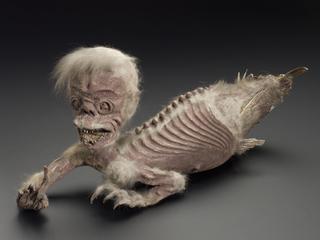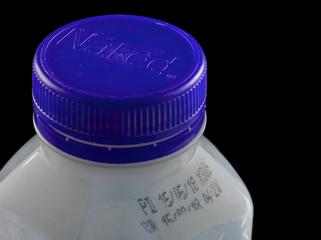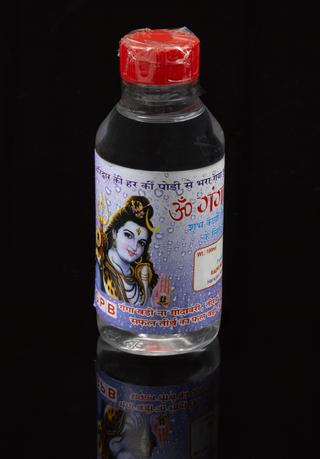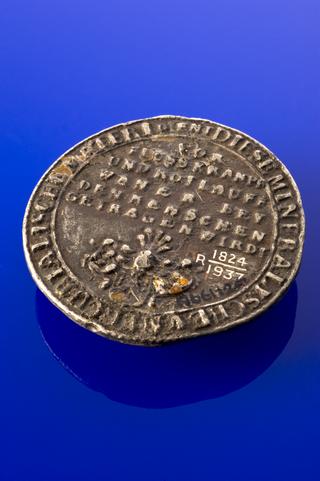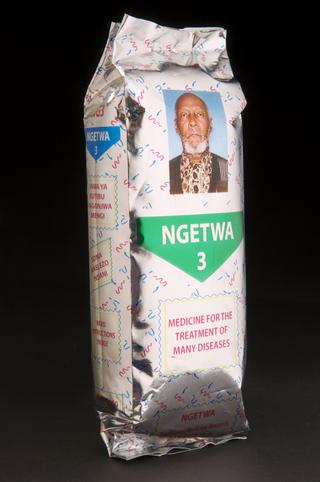
Wooden placenta bowl, Maori, New Zealand,1890-1925
- Made:
- 1890-1925 in New Zealand


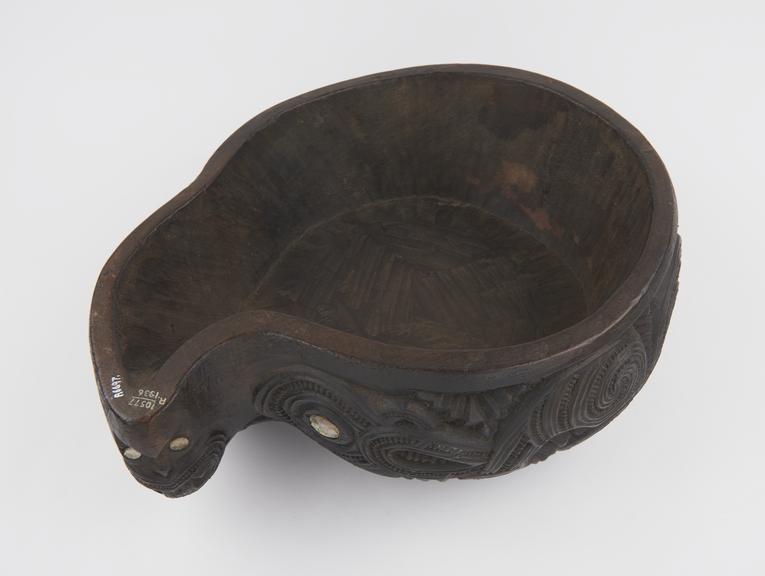

Carved wooden placenta bowl, or ‘ipu whenua’, hemispherical with curving side gully, elaborately decorated with interwoven anthropomorphic designs and dentate ornament, used by Maori midwives for receiving the after-birth, Maori, New Zealand
Placenta bowls, or ‘ipu whenua’, carried the placenta delivered from the mother’s body after she had given birth. The placenta organ supplies the foetus with oxygen and nutrients while in the womb. It develops alongside the child and is expelled from the body after the child is born. This is called the ‘after birth’.
This bowl was carved in the Rotorua region of New Zealand. It is made of wood with inset abalone shell. It may have been created by skilled craftsmen for the early European tourist market rather than for its traditional use. The bowl is intricately carved with overlapping animals and ancestral figures called Tiki. Tiki represent strength, communication and fertility. These carvings encapsulate legends passed through generations of Maori people since New Zealand was discovered by Polynesian people over 2000 years ago.
'Whenua' refers to both the placenta and land in Maori culture. The placenta is ceremonially buried, often on ancestral land, when a child is born. This creates a relationship and responsibility toward the landscape. It reinforces ancestral ties and responsibilities to the child’s ‘Iwi’ or clan. This ritual has its origins in the proverb ‘He taonga no te whenua, me hoki ano ki te whenua’. It means, ‘what is given by the land should return to the land’. This practice has experienced a recent revival.
Details
- Category:
- Ethnography and Folk Medicine
- Collection:
- Sir Henry Wellcome's Museum Collection
- Object Number:
- A6697
- Materials:
- wood and decoration, mother-of-pearl
- Measurements:
-
overall: 135 mm x 250 mm x 324 mm, 1.88 mm,
- type:
- placenta bowl
- credit:
- Sotheby's
